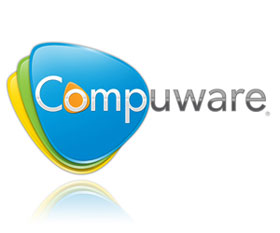Pick me, pick me
 We have either seen the movie, or experienced the scenario ourselves.
We have either seen the movie, or experienced the scenario ourselves.
Standing amongst a large group of friends, school mates or even at the community braai, we wait in anticipation for someone to pick us for their team. Sadly, there are always a few kids that get left out, banished to the side-lines with the task of dispensing oranges at half time (never mind, if you do your research you will find out that most of these kids are now CEO’s or very very rich).
Now, in the world of Application Portfolio Management (APM), these “kids who are banished” are exactly what we are aiming for. We want them out for good and have no tears to shed this time.
Enterprise applications account for a significant amount of the CIO’s budget. Years and years of rapidly adapting to business requirements and spinning out new applications as quick as we can have caused many unwanted side effects. If organisations today want to remain competitive and get the balance right between running IT and providing innovation to the business (and most of the time this is done through innovative applications), less money must be spent on ageing and duplicated application portfolios.
APM needs to be part of your overall application transformation strategy. Most application transformation strategies will be made up of three general phases/areas:
- Assess – here we discover, analyse and decide on our applications
- Modernise – here we keep, change and retire applications
- Manage – here we focus on the quality, integrity and continuity of applications
APM is covered in the assess phase described above. So what is Application Portfolio Management exactly and how do we approach the initiative? In short, APM is all about determining what applications you have in your organisation, who uses them, what they do (what business functions do they enable) and how much they cost to maintain. APM should be part of your Enterprise Architecture strategy because lefts face it, the applications are where the jam is. How can you build an enterprise IT strategy if you do not know what applications you have, what business functions they underpin and where you need to invest/modernise IT moving forward?
So how do you approach APM and where should you start? Firstly, get senior management buy in. Whilst you might have all the energy and passion to make a difference to the business, without the necessary support from the top all your efforts will probably be wasted. Many organisations today have application teams/owners in most of their business units with all application decisions made in those specific areas.
Imagine that your organisation has 20 different business units and each of them make decisions independently. As popular as you might think you are, no-one has 20 friends in one company who are all at senior level. If you need help to convince the big cheeses that this is an important endeavour, use some simple case studies/ROI’s of others who have make the bold move. If there is one place IT can save money, rationalising their application portfolio will certainly be a significant contributor. (If you need an example of APM ROI, drop me an email and I will happily share with you).
Now that you have the buy-in of the top brass and they have given you the go ahead, you will need to build the APM system. Yip, sorry to say it but you will need another “application” to do APM, the irony here. But rather than build one yourself, speak to a vendor and ask them for a perspective of what they have. Do NOT try and build this yourself, this is not another pet project. Building an APM system is not trivial and you will need various technologies to help make it all work. The APM system will need two major perspectives, one from the business and one from technology.
The business perspective is what we need to gather from all the various stakeholders who are using the various applications. We need to collect the following metrics (there are many more but these are a good start):
- Application name
- Business owner
- Technical owner
- Location
- What it does for the business
- What process does it automate
- Who supports it
- How much does it cost
- How old is the application
- What else does it do
These business metrics are typically gathered via well-crafted surveys that populate the data store in the APM system. After a couple of weeks you will then be able to start slicing and dicing (analysing) the information to get an initial perspective on function, cost, value, risk and quality.
The technology view is what actually exists in the digital ether of the data centre (and small servers hidden under your desk). Technologies like application discovery and dependency mapping are used to find out the truth and discover what we know and what we do not know (or have forgotten about). Trusting a business owner to tell you that the CRM application is self-contained and does not interface with any other system or application, is like asking my mom if she knows of any additional “interfaces” to the home entertainment system.
A lot of thumb sucking and wild stabs in the dark must be avoided. I cannot recall how many times I have seen very clever people forget about critical integration interfaces until they were reminded when a discovery tool showed that system A was indeed talking to system B via interface/port X.
Now the magic really happens when the two perspectives come together and give us a consolidated view of the application portfolio. We can link technology landscape to the business application, which is linked to the business process and rolls up to the specific business unit or entity. Some would argue that this was the original vision for the Configuration Management Database or system, but let’s have that debate over a beer rather.
For now we want the system to enable some tough decision making on where to chop, upgrade, retire or rebuild our applications. See how this then allows us to move into the next phase of our application transformation strategy? We have done the assessment, we have a good perspective on where to invest and innovate. Now we can get cracking on making a real difference to the business.
Understand this, APM is not a one-time initiative. It has to be baked into the overall application governance and enterprise architecture strategy. Things move very fast in the 21st century business world, which means they move even faster in the application space. Today we have our portfolio view, tomorrow someone needs to make some changes or rollout a new application. Should we do this, what would be the business benefit, do we already have an application that does this, how much will it cost, who will do this and how long will it take - can you answer these questions?
Making the tough decisions in your application portfolio should now be a lot easier. You have the supporting data to make non-emotive decisions for the good of the business, it is not personal. But how do you look little Johnny in the face and say, “Sorry young man, you are not needed as all the positions are taken”? Which would you rather make the call on? Play nicely J
By Clive Brindley, Channel Manager, HP Software



